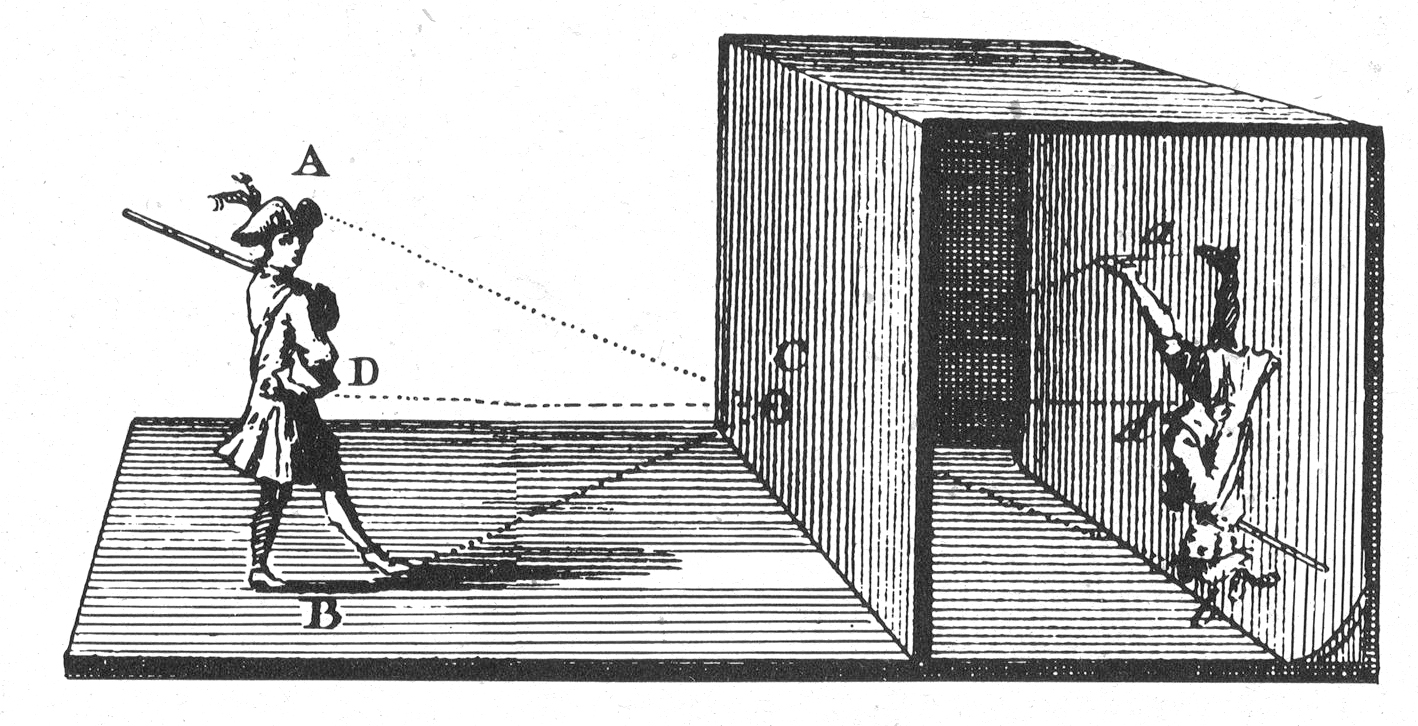Ask a full-grown man why he’s choking back tears at the mere mention of the 1989 baseball fable Field of Dreams, and he is almost certain to cite the film’s famous final scene, in which 33-year-old Kevin Costner, voice at once hopefully boyish and soggy with the emotionalism of looming middle age, says to an anachronistically clad young ballplayer, “Hey, Dad? You wanna have a catch?”
While technically the answer to a series of supernatural riddles—at the movie’s outset, Costner’s character, Ray Kinsella, hears a disembodied voice in his Iowa cornfield repeating If you build it, he will come, after which he irrationally constructs a ballpark—the baseball-mediated reconciliation between the son and a younger version of his father resonates with anyone carrying unresolved conflict with a parent, or shame over youthful hotheadedness, or just bucolic memory of childhood sport. There’s a good reason that Field of Dreams is the third-highest-grossing baseball movie of all time (adjusted for inflation), and there’s a good reason it remains the go-to source at live games for inspirational audiovisual clips.
But there is another, more insidious piece of symbolism in that very same scene. As the camera pans out from the father-son reunion and into the twilit summer sky, we see a line of cars snaking in from miles around, fulfilling a prophecy delivered minutes before by the novelist character played by James Earl Jones: “People will come, Ray. They’ll come to Iowa for reasons they can’t even fathom. They’ll turn up in your driveway not knowing for sure why they’re doing it. They’ll arrive at your door as innocent as children, longing for the past. ‘Of course, we won’t mind if you look around,’ you’ll say. ‘It’s only $20 per person.’ They’ll pass over the money without even thinking about it.”
As prediction, let alone brazen self-reference, the speech is uncanny: People have indeed been coming by the thousands each year to the Dyersville, Iowa, farm and ballfield where the movie was shot. Major League Baseball (MLB) held special regular-season games there in 2021 and 2022, with the requisite Costner narration and players materializing like cinematic apparitions from the outfield cornstalks. Yet it’s not precisely the past these pilgrims are longing for, but rather an ersatz depiction of an idyll that never existed, one that neatly evades decades of messy, real-world dysfunction—in baseball, in America, within families.
By demonstrating that people will indeed shell out good money to feel nostalgia for make-believe, Field of Dreams helped create the template for the modern baseball industry: Build expensive, “retro”-looking stadiums and get taxpayers to foot the bill by selling them a mixture of gee-willikers Americana and economic analyses every bit as magical-realist as the source material. Camden Yards, the single most imitated construction project in MLB history, was funded with $482 million of public money (in 2022 terms) and greeted upon arrival in 1992 by The New York Times with the headline: “Field of Dreams Comes True in Baltimore.”
That Inner Harbor structure, with its throwback brick arches, 19th century cast-iron gates, and intentionally quirky asymmetry, was the opening salvo in a 25-stadium building boom financed by more than $9 billion in taxpayer money (in constant 2022 dollars), according to the Kennesaw State University sports economist J.C. Bradbury. The minor leagues, too, got into the act, so much so that state and local governments are on the hook for an estimated quarter-billion dollars in financing just for stadiums that now stand empty. “These partners have heard the message from the movie Field of Dreams: ‘If you build it, they will come,'” then–New Jersey Republican Gov. Christine Todd Whitman said in 2000 while breaking ground on a $24 million ballpark in Camden. “Soon we will see a field of dreams right here in Camden, and my prediction is they will come.” By 2015, after lease renegotiations with the city broke down, the Camden Riversharks independent minor league team folded.
The movie’s contrived nostalgia has implications broader than the forcible redistribution of general tax funds to a narrow and already profitable segment of the entertainment industry. Field of Dreams doesn’t just honor the cherished memories of our childhood; it insists that baseball back then, and therefore America itself, was better. “It reminds us of all that once was good, and could be again,” Jones’ character Terence Mann booms out, in a baritone that’s been heard at thousands of MLB games.
We have adjectives to describe the insistence on a superior past, and they tend toward the pejorative: vestigial, atavistic, reactionary. Exaltation of lost glory necessarily discounts the present; reimposing the ancien régime requires tossing aside today’s players, often with casual recklessness. Audiences embraced Field of Dreams because it’s a sumptuously shot, well-crafted movie with compelling actors and an Oscar-nominated score, yes, but also because they worried then—and continue to worry now—that something valuable is vanishing, that the best of baseball and the country of its birth is in the rearview mirror. That the only path to redemption is believing, twice as hard this time, in a fairy tale. One that narcissistically absolves our own active role in the decline.
Not OK, Boomer
Three of the four most popular baseball movies in history debuted within 39 months of each other—No. 4 Major League in April 1989, followed the next month by Field of Dreams, then No. 1 A League of Their Own in July 1992. Pull the periscope back a bit, and 10 of the top 15 Hollywood depictions of the national pastime (including such enduring films as Robert Redford’s sentimental The Natural and Costner’s bawdy Bull Durham) came out between 1984 and 1994. Why is that?
One clue lies in Costner’s scenery-chewing generation, the baby boomers. America’s birth rate peaked between 1946 and 1957 at levels higher than the previous two decades and never seen since. (Costner, who has yet a third movie in the hardball top 20, 1999’s For Love of the Game, was born in 1955.) Baseball, the oldest of American professional sports, was the undisputed king during boomer childhoods—the soundtrack of radio, the pioneer of television, crushing all contenders for public attention until the National Football League vaulted up in the mid-1960s. Baseball, hot dogs, apple pie, and Chevrolet, went the old commercial jingle: They go together in the good ol’ U.S.A.
Those core boomers were between 31 and 43 when Field of Dreams hit theaters, the perfect age for reminiscing about boyhood adventures, reflecting on life choices, reconsidering dear old dad…and relitigating the ’60s.
“I’ve always been interested in what do we do with the youthful ideals when we’re no longer youthful,” writer/director Phil Alden Robinson said in a 2019 interview, explaining why he recast Ray and his spunky wife Annie (played by Amy Madigan) as graduates from the Berkeley counterculture rather than products of America’s heartland, as they had been in Shoeless Joe, the 1982 W.P. Kinsella novel from which Field of Dreams was adapted. “For those who cut our teeth in the ’60s, and thought we were so groundbreaking and rule-breaking and iconoclastic, how do you carry that through into adulthood?” Robinson asked. “In a way, that’s what Ray’s story is about.”
As boomers began to seize the means of cultural production during the Reagan era, they clogged the bookshelves, airwaves, and theaters with expressions of nagging ambivalence about their own prosperity at a time when the Woodstock ethos was fading from view.
“In the late ’80s and early ’90s,” wrote Katie Arnold-Ratliff in a perceptive 2014 essay for Culture.org, “there arose a micro-genre of sincere but funny existentialist narratives, all featuring boomer-aged protagonists who attempted to clarify what really matters and pinpoint how one ought to live.” Besides Field of Dreams, Ratliff listed Peggy Sue Got Married (1986), Mr. Destiny (1990), L.A. Story (1991), Defending Your Life (1991), Groundhog Day (1993), and Heart and Souls (1993)—all movies where “a boomer, usually dissatisfied, interacts with a magical or supernatural force and, as a result, arrives at a conclusion about the meaning of life.” They were happy and successful on the surface, sure, but wasn’t there supposed to be something more?
Field of Dreams wastes little time plunging into the generation gap. In an introductory montage, as we see collegiate scenes of peace, love, and protest, a Costner voice-over explains that “officially my major was English, but really it was the ’60s.” (He means the early-’70s variety, Ray having been born in 1952.) “I marched, I smoked some grass, I tried to like sitar music, and I met Annie.” Not the deepest dip into revolutionary waters, but enough to make permanent the alienation from his heroic, widowed World War I–vet father, of whom Ray grudgingly allows, “I suppose Dad did the best he could.”
Near the end of the first act, Annie attends a raucous school board meeting to rebuff attempts by a local conservative busybody to ban a book by the aforementioned Terence Mann, coiner (fictitiously) of the slogan “Make love, not war.” Annie calls the book banner “Eva Braun” and a “Nazi cow,” but the sickest burn is that the frumpy scold didn’t experience “even a little bit of the ’60s.” When the hausfrau protests that she in fact had, Annie zings back: “I think you had two ’50s and moved right on into the ’70s!” Flushed with victory, Annie gushes to her husband (who is too myopically focused on his own quest to even register his wife’s triumph), “Was that great or what? God, it was just like the ’60s again!” (Subtle, this movie is not.)
When Ray locates the reclusive Mann (in the book, the character is literally J.D. Salinger), Jones comically attacks him with an insecticide sprayer: “Out! Back to the ’60s! Back! There’s no place for you here in the future! Get back while you still can!” Alas, that tonic acidity is destined to melt into a conciliatory goo.
The intended utility of that famous decade here is as undousable idealism, every bit as worthy of integrating into late-’80s adulthood as the quest to patch things up with Pop. By chasing his hallucinatory visions across the country, even as his neglected wife and kid fend off foreclosers back home, Ray reignites his sense of purpose, pulls a beloved writer back from bitter exile, and sets the stage to reconcile with his late father.
Or does he?
In an acerbic 2016 Inside the Kraken essay, Josh Kyu Saiewitz pointed out that Ray’s original beef against his dad is almost laughably immature: The old man went to war and got a job and raised a family responsibly instead of pursuing dreams of playing baseball. What a sellout!
Ray, on the other hand, “has no accomplishments and no ambitions,” no apparent clue how to farm, not even a contemporary rooting baseball interest, even though Iowa is home to a half-dozen minor league teams and two dozen college baseball programs and is within road trip driving distance of six MLB stadiums. His agonized plight is as “common as dirt for people his age,” Saiewitz contends. “Having missed out on his chance at greatness (or so he believes), Ray feels as though he sold his dreams and settled down for the kind of traditional family-and-job life he failed to fight against.”
In a just world, or at least a world able to consider non-boomer points of view, Ray would come back from his odyssey having learned enough humility to appreciate his dad’s selfless choices. And yet: “When Ray’s father’s ghost emerges to tentatively search for forgiveness,” Saiewitz writes, “he comes as a young man in a baseball uniform. If Ray is to forgive his father, shouldn’t he forgive the version of his father that he knew and failed to respect, not the version Ray wished his father had been?”
Field of Dreams, like so many coming-of-middle-age dramedies at the turn of the ’90s, wants to identify with and vaguely defend that 1963–74 tumult known as “the ’60s” without doing the hard work of asking whether all that self-absorption was really so noble.
Oh, God
It takes a while to put a finger on what feels out of place in Ray’s otherwise picturesque Iowa existence. Sure, Costner dresses more like Sting performing at Live Aid than anyone who works with machinery and dirt, but it’s understood that Ray’s a bit out of place. No, it’s the fact that Ray and Annie, and even their adorable daughter Karin (played by Gaby Hoffman in her cinematic debut), don’t have any visible friends.
In 2023, particularly after the damaging isolation of the COVID-19 pandemic, we understand much more viscerally the pathologies associated with loneliness, with the decline in community participation, and with the collapse in organized religion. People who do not interact at least semi-regularly with their neighbors, who have fervor aplenty but lack the channels for venting it, are like petri dishes for unhappiness and dysfunction.
Field of Dreams is a religious movie for atheists (“Is this heaven?” “It’s Iowa” is a recurring gag). It has oft been analogized to the prophetic dreaming of Joseph—he of the amazing technicolor coat—in the Book of Genesis, praised for its multiple storylines of redemption, and mimicked in its veneration of baseball diamonds as sacred spaces. Ray desperately needs spirituality, but having a degree in the ’60s means swapping out actual religion for some bespoke woo-woo. Even after following voices, seeing ghosts, traveling through time, and speaking with the dead, Ray still asks his long-deceased father, “Is there a heaven?”
At the time the film came out, 90 percent of Americans described themselves as Christian; that number almost immediately began tumbling down to its current 63 percent, according to the Pew Research Center. Church membership overall has gone from around 70 percent in 1989 to below 50 percent, according to Gallup, and church attendance, even among members, has also been in steady decline. We are no longer waking up at a decent hour on Sunday mornings, putting on presentable clothes, and getting that weekly pep talk.
The superstitious substitute offered in Field of Dreams is a spin on the same alluring mythos that’s been baked into baseball since the 19th century: a pastoral break from city life, a yearning for the wide-open spaces of the frontier, a ham-handed if ultimately successful attempt to insist on the unique Americanness of a sport derived from British bat-and-ball games. You know the clichés even if you don’t know anything about the rules—the smell of cut grass, the laziness of summer afternoons, competition without a clock.
But like a lot of American nostalgia, particularly of the baseball variety, this gauzy version of the past whitewashes a colossal and contentious issue: race.
White Lines
Another Field of Dreams anomaly that most don’t notice on first viewing is that each and every deceased former ballplayer who crosses the chalk lines into the magical ballfield is white. This is no small oversight, given that the first people to emerge from the corn—Shoeless Joe Jackson and the seven of his Chicago White Sox teammates who were all famously banned from baseball after accepting gambling money to lose the 1919 World Series—exist in some kind of limbo, where they had been waiting nearly seven decades for the chance to once again lace up their spikes. (Jackson, a generational talent whose culpability in the “Black Sox” scandal is the most contested, is key to the story here because, both improbably and inaccurately as a matter of law, Ray admonished his dad that he could not respect a man whose favorite player was a “criminal.”)
If the portal had been limited to those “eight men out” (as the Black Sox were called in the titles of a 1963 book and a 1988 movie), then the one-sided racial composition would have made sense, since the MLB infamously prohibited dark-skinned players until Jackie Robinson broke the color barrier in 1947. But later in the story, to muster enough bodies for a full nine-on-nine game, Jackson & Co. allow in from the cornfield such all-timers as Mel Ott (whose 22-year career ended in Robinson’s rookie season), and Gil Hodges, who played all the way up until 1963.
“You wouldn’t believe how many guys wanted to play here,” Shoeless Joe tells Ray. No doubt! But that waiting list surely would have included some Hall of Fame Negro Leagues players who were never allowed to compete with the likes of 1919 ringleader and all-around scumbag Chick Gandil. If there was indeed an afterlife holding pen for those unfairly barred from playing in the Major Leagues, then unless God has a sick sense of humor, it would prioritize players such as Martín Dihigo—a Hall of Famer in the U.S., Cuba, Mexico, the Dominican Republic, and Venezuela—over such mediocre infielders and serially confessed game-throwers as the Sox’s Swede Risberg.
Baseball has a long and sometimes tawdry history of using fact-challenged nostalgia as a way of leapfrogging backward over a discomfiting present and recent past. One of the greatest and most influential baseball books ever written, Lawrence Ritter’s oral history The Glory of Their Times, came out in 1966, smack dab in the middle of that decade’s racial tumult and inner-city violence (which, among other effects, drove many MLB franchises away from idiosyncratic downtown stadiums into cookie-cutter multipurpose venues in the suburbs). Ritter’s evocative first-person testimonials, editorially massaged and undisturbed by fact-checkers, came from 22 players whose careers all ended before Jackie Robinson’s began.
Robinson himself had published an oral history of baseball players and coaches two years prior called Baseball Has Done It, but instead of telling shaggy-dog stories about the turn-of-the-century game, they confronted with bracing honesty the thorny, fresh-of-mind issue of desegregating baseball. Ritter’s book was a sensation. Robinson’s considerably more valuable piece of historiography vanished from popular knowledge.
The irony of traditionalists in any arena is that the past they claim to valorize is accurate less as history and more as a catalog of their own beefs with modernity—especially when it comes to the supposed greed and tacky comportment of the men today lucky enough to play a boy’s game professionally.
“Man, I did love this game,” a reverent-looking Ray Liotta, playing Shoeless Joe, says in Field of Dreams. “I’da played for food money! It was a game! The sounds, the smells!” Not to be too pedantic about it, but the $5,000 that Joe Jackson accepted from gamblers in 1919 (roughly $83,000 in today’s money) would have covered plenty more than just meals.
Baseball back then was not some pure exercise of athletic competition—it was rife with player/fan violence, marred by labor strife, warped by owner capriciousness, and filthy enough with corruption that around two dozen other players besides the 1919 White Sox were banned after new MLB Commissioner Kenesaw Mountain Landis tried to clean things up in the 1920s. “The Black Sox scandal was merely the largest wart of a disease that had infested baseball at least a dozen years earlier and had grown, unchecked, to ravage the features of a generation,” Bill James writes in his Historical Baseball Abstract.
Purists who hearken back to an imagined past are often the same people who complain loudest when the younger generation of MLB players admire their own home runs, strut off the pitching mound after a strikeout, or otherwise refuse to “play the game right.” Traditionalism has been used to complain about free agency, shunt aside an entire generation of elite ballplayers associated with performance-enhancing drugs, and threaten federal legislation to drug-test not just professionals but high school athletes.
“The illusion that baseball propagates,” MLB Official Historian John Thorn told me in 2021, “is that in a swirling, changing society, this is the one fixed point. That the game that you played as a boy was the game your dad played as a boy, or your mom played as a girl.”
Or as James Earl Jones thunders in Field of Dreams‘ most memorable speech, “The one constant through all the years, Ray, has been baseball. America has rolled by like an army of steamrollers. It has been erased like a blackboard, rebuilt, and erased again. But baseball has marked the time.”
Dreams and Schemes
In 1999, the journalists Neil deMause and Joanna Cagan wrote a book with the subtitle How the Great Stadium Swindle Turns Public Money into Private Profit. The name of the book, as well as a still-thriving website and Twitter feed? Field of Schemes.
Field of Schemes is an excellent website to keep track of public-policy shenanigans still being perpetrated in the name of Field of Dreams. Sometimes literally: The owners of the site where the movie was filmed have received $45 million from state, local, and even federal governments to pay for a new 3,000-seat stadium known as the This Is Iowa Ballpark (well, it sure ain’t heaven), whose main hoped-for source of income is a future annual MLB game that isn’t even guaranteed. Half that public money, believe it or not, derives from federal COVID-19 relief funds.
Bradbury, the sports economist, called the stadium “another nomination for the Hall of Terrible Ideas” as the project gathered steam last August, and he’s not wrong. The cities of Dyersville (population 4,500, annual budget $9.5 million) and Dubuque (population 60,000, annual budget $139 million) plus Dubuque County (population 99,000, annual budget $70 million) are combining forces and monies and ownership responsibility in a Byzantine financial arrangement that stands most to benefit a private entity owned by former Chicago White Sox superstar Frank Thomas. Actual big-league stadiums with actual tenants in actually thriving cities do not earn their subsidies and tax breaks back; throwing scarce local money at a tourist destination in the middle of rural Iowa is the kind of straw-brained scheme only politicians and hucksters could love.
“We have to fund projects that can bring us together,” Dubuque Mayor Brad Cavanagh told The Des Moines Register last August, in a comment that deserves a James Horner film score. “We have to find things that are going to lead us in a direction of unification rather than tearing us apart.”
The supposedly pandemic-focused $1.9 trillion American Rescue Plan has funded such other sports boondoggles as, in deMause’s words, “$12.5 million for a Hudson Valley Renegades minor-league baseball stadium and $15 million to try to bring 2026 World Cup games to New Jersey, plus probably more examples that we don’t know about because the Treasury Department is doing such a crappy job of providing info on where the money is being spent.”
Field of Dreams is now old enough that the first wave of subsidized retro-stadiums-cum-downtown-development-projects are dipping back into the taxpayer till for a refresh, vowing that this time, surely, we will public-private-partnership our way into prosperity. Maryland Gov. Wes Moore and Baltimore Orioles CEO John Angelos jointly announced in February 2023 a commitment to create a new revitalization project for Camden Yards, which Angelos characterized as a “tremendous opportunity to redefine the paradigm of what a Major League Baseball venue represents and thereby revitalize downtown Baltimore.”
“So, let me get this straight,” Bradbury tweeted. “The supposed example of how a properly designed ballpark project…can spur surrounding development now wants to develop the surrounding property whose development it didn’t catalyze after 30 years.”
In January, Bradbury co-authored a paper exploring, among other issues, why stadium subsidies keep growing even as economic analyses of their effects are so overwhelmingly negative. Why do we keep financing the lie?
One potential answer may also help explain the enduring popularity of Field of Dreams. We choose to believe in what we know is a myth, because it makes us feel better. It satisfies, even if temporarily, some longing that we can’t seem to sate. A great piece of art can resonate with feelings and needs we might not be able to articulate. There is persistent consumer demand to believe in magic.
Thorn’s masterful 2011 book Baseball in the Garden of Eden was the culmination of 28 years of researching the actual messy evolution of the game of baseball and then contrasting it with the consciously created false narrative that the sport was hatched in the fields of upstate New York by an upstanding future Civil War vet named Abner Doubleday.
“At the midpoint of my research,” Thorn says, “I realized that far more interesting than setting a lie straight was asking why this person lied. Was it a knowing lie? And if so, what was his or her aim? What was being promulgated? What was being covered up?”
“The title Baseball in the Garden of Eden derives not merely from some agrarian paradise that thrust its unemployed lads into the city,” he continues, “but rather the Garden of Eden that exists between our ears even today, that we have a nostalgia: We have nostalgia for events in our own lives, in the lives of our parents, in the lives of people we only dimly, if at all, know anything about.”
If we want less of our taxpayer money to be extracted to line the pockets of billionaires, if we want to get government out of the (bad) business of economic development, if we want to appreciate baseball for what it is now rather than what we pretend it was way back when, then we ought to separate our appreciation for good myth making from our support, tacit or explicit, for public policy based on lies. Let Field of Dreams be just a movie again and not a blueprint for boomers to keep bamboozling us.
When Mann tells Ray that people will indeed pay to come see a folly of a ballpark in the Iowa cornfields, he explains that “it is money they have and peace they lack.” On this, the mercurial author is correct. The search for spiritual peace can be endless, but it is more likely to be found between your ears, and in your own family, and in the community around you than by replicating cinematic make-believe at taxpayer expense.
The post The Expensive, Seductive Nostalgia of <i>Field of Dreams</i> appeared first on Reason.com.
from Latest https://ift.tt/zOZBclT
via IFTTT












